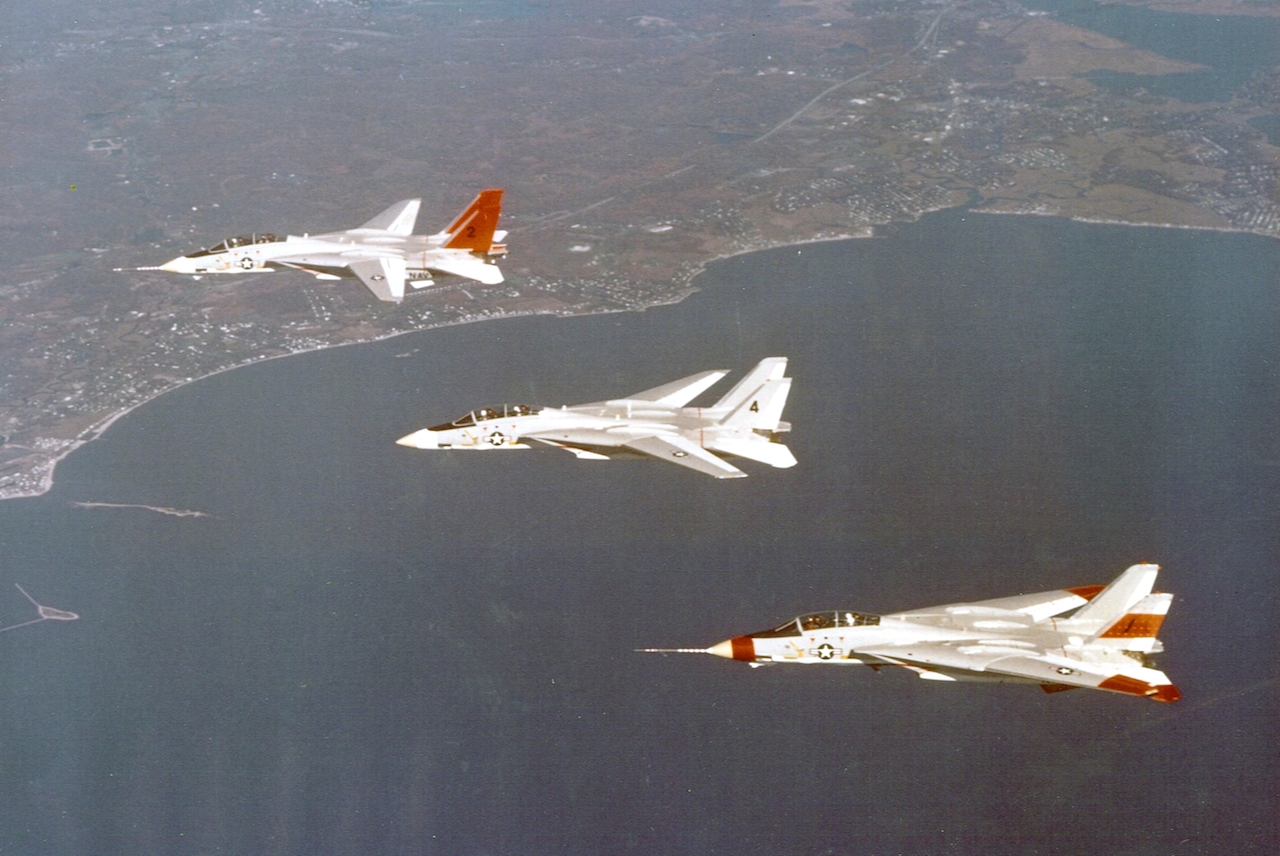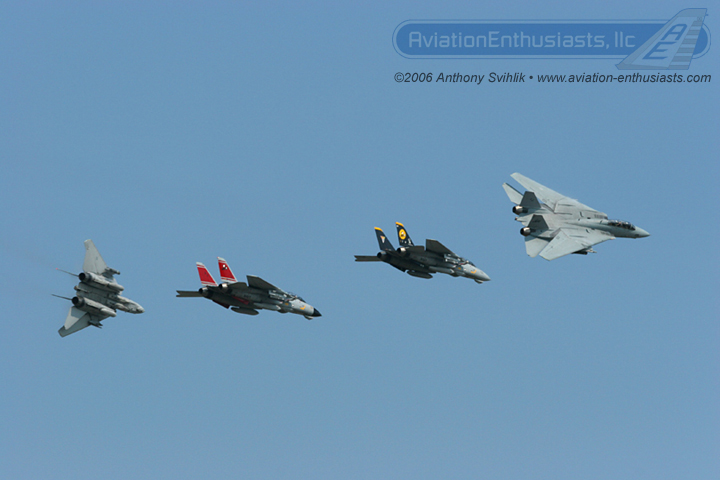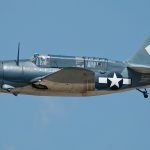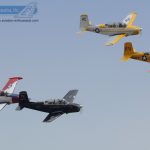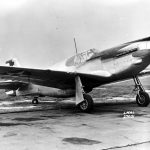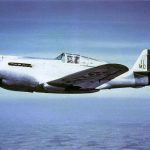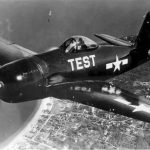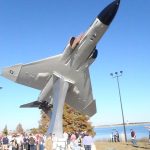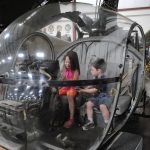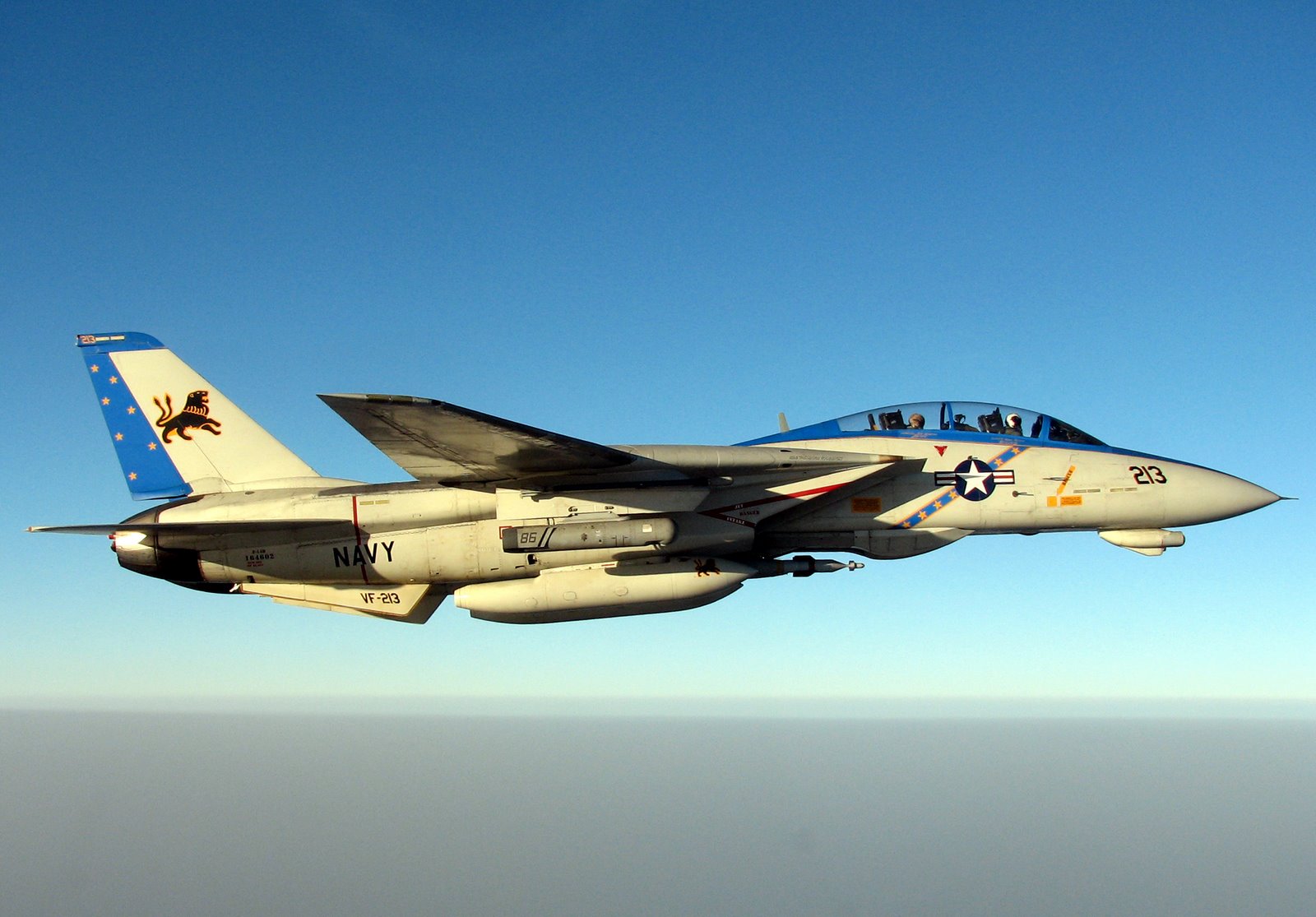
By www.aviation-enthusiasts.com
The Grumman F-14 Tomcat flew for the first time 44 years ago today. The F-14 emerged from the failed F-111B, which left the Navy without a successor for the F-4 Phantom in the air defense role. Variable geometry swing-wings combined high-speed performance and supersonic maneuverability with docile low-speed handling. The Tomcat was well ahead of its time – the Central Air Data Computer used to control wing sweep was the first microprocessor design in history and it’s design was not made public until more than 20 years after the F-14 first entered service. The Hughes AN/AWG-9 radar was capable of detecting and tracking 24 targets flying at different airspeeds, altitudes and directions while engaging six targets simultaneously at a range of 100 miles with the AIM-54 Phoenix missile. A Tactical Air Reconnaissance Pod System (TARPS) was designed for use on the Tomcat in the carrier-based photo-reconnaissance role as the RA-5 Vigilante and RF-8 Crusader aircraft were retired. TARPS allowed the F-14 to deliver real-time photos to theater commanders, providing surveillance and Bomb Damage Assessment imagery. The Low Altitude Navigation and Targeting Infrared for Night (LANTIRN) system allowed the Tomcat to transition to the “Bombcat,” enabling it to fly at low altitude, at night and in all weather conditions to attack ground targets with a variety of precision-guided munitions. The Tomcat did it all – long-range carrier-based fleet interceptor, tactical reconnaissance platform and fighter-bomber aircraft.
Wikipedia pubblished the picture above showing three U.S. Navy Grumman F-14A Tomcat prototypes in flight near Calverton, New York (USA). The three aircraft show the wing configuration options available on the F-14A. Although the aircraft are numbered “1”, “2” and “4”, these aircraft are probably the 2nd, 3rd and 5th production aircraft, as the first prototype already crashed on its second flight before any other F-14 was built. Therefore, probably visible are: “1”: F-14A-5-GR (BuNo 157981) made its first flight on 24 May 1971. It suffered an inflight hydrazine fire in an auxiliary power unit on 13 May 1974. 157981 landed safely but was written off due to extensive damage. “2” F-14A-10-GR (BuNo 157982) was used to explore the outer reaches of the F-14 performance envelope and flew trials with steadily increasing loads and speeds. Today, it is on exhibit at the Cradle of Aviation Museum, Garden City, New York (USA). “5” F-14A-25-GR (BuNo 157984) was assigned to Naval Weapons Test Center, Naval Air Station Point Mugu, California (USA). Today, it is on exhibit at the National Museum of Naval Aviation, Pensacola, Florida (USA). Consider a donation to Wikipedia, click HERE.
Below is a photo of a flight of four F-14s from the “Tomcatters” of Fighter Squadron Thirty One (VF-31) at the 2006 Naval Air Station Oceana Air Show during the Navy Air Power Demonstration. Aviation Enthusiasts founder Antony Svihlik, was a Plane Captain on Tomcats during his time in the Navy. Be sure to visit the full website at www.aviation-enthusiasts.com for more aviation and air show memories!








